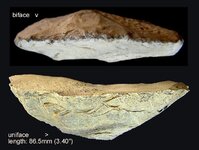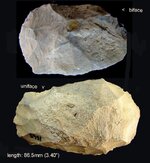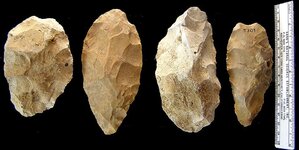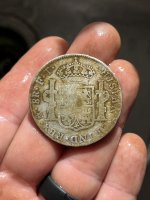Wallhangers
Hero Member
- Jul 28, 2008
- 897
- 59
- Detector(s) used
- XP Deus, Minelab Explorer SE Pro, T2 SE
- Primary Interest:
- All Treasure Hunting
Found this morning and it is the second one of these I have found on this particular site, although this one is a little thinner and worked a little better. As I am still learning about artifacts, I have been a little confused in the difference between a core, preform, bi-face, large blade, small hand axe and flaking tool. In your opinion, what would you call this one. It is 2 1/2" long, 1 7/8" wide, and 3/4" thick at the thickest spot. Found in SW Michigan. Thanks for your thoughts!






Last edited:
Upvote
0








